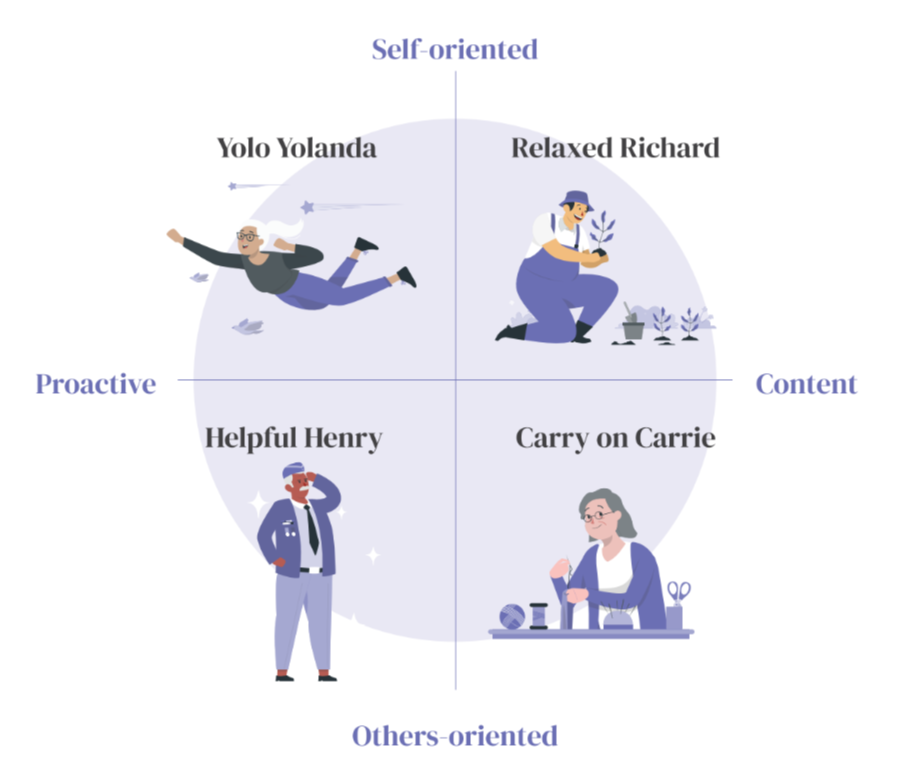Activating a new force for seniors
A new framework helps the elderly reset how they see themselves in society.
SAFSG is an active army. It is also a force to be reckoned with in Singapore. That’s what industrial designer Sim Hao Jie hopes to achieve with “Senior Active Force Singapore” or SAFSG, a framework for Singapore’s ageing population to stay active and continue making meaningful contributions.
Hao Jie and his team known as the Ministry of Hope Affairs embarked on this GDR project after noticing how seniors are perceived narrowly in Singapore.

“We observed that seniors are usually put into one basket of socioeconomic or health status. Our research wants to add another lens to see them through their motivations and mindsets instead,” says Hao Jie.
The multi-disciplinary team of designers, data scientists and professionals in the social sector identified what these were through a survey of 300 seniors and interviews with another 30. These led to the creation of four personas based on common traits in how seniors approached their golden years: “Relaxed Richard” is a homebody who likes to stick with routine; “Yolo Yolanda” is proactive and adventurous; “Helpful Henry” seeks growth and loves contributing to the community; while “Carry on Carrie” gets a sense of purpose from working or caring for her family.

In addition, key phases in seniors’ ageing experience are mapped out – ranging from being “engaged” to “transiting”, “exploring” and “committing”. The journey map and personas together form a framework for understanding what the experience of ageing is like for many Singaporeans.
Hao Jie explains it’s about understanding what do these seniors’ social lives look like? What challenges do they face?
Since launching the framework in December 2022, the team has produced a digital book with their findings and also shared it with various agencies in the social services sector who are studying how it can be used to develop their programmes and come up with ideas to support seniors across their different attitudes and experiences about ageing.

“We saw some wins when we presented the framework to these social services and they started using the terms we created,” Hao Jie says. “Moments like that assure us that the framework is easy enough for people to catch on and at the same time reflects who our seniors are.”
During workshops organised to test the framework, the team were also pleasantly surprised to see seniors resonate with it. Several recognised how they were once a “Helpful Henry” or “Carry on Carrie” when they were engaged in work, but had “transited” into a “Relaxed Richard” after retirement. This led several to express a desire to embark on a phase of “exploring” and “committing” to new communities and activities.
“It’s heartening to see that the framework has gotten seniors to think about where they are now and what they can do,” says Glenda. “This is a good segue to the vast opportunities and programmes that are already available for them.”






